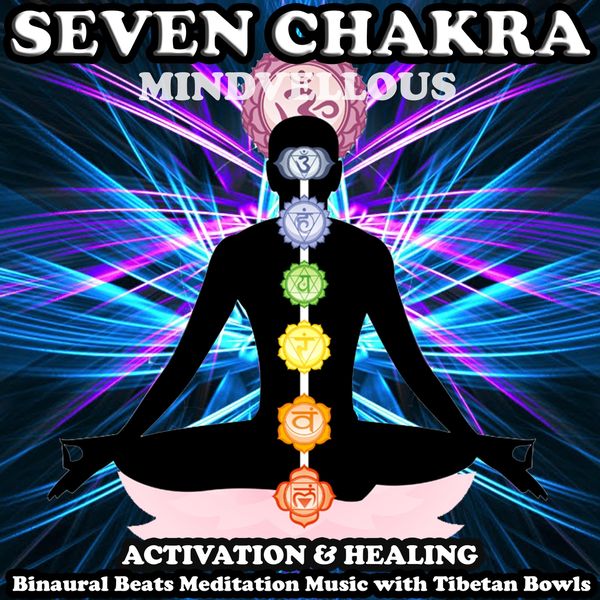
While it is difficult to know the origins, there are many theories. Bodhidharma took Zen teachings to China during the sixth century. Bodhidharma introduced this practice to Japan nearly a century later. Zen gained independence from written language during his travels. He taught his students how to turn around dhyana using the Lankavatara Sutra as a reference. All of the early Zen masters were well-versed in Buddhist texts and canons.
Bodhidarma brought Zen from India to Japan, where it has remained for over a century. He was known for his no-method approach during his lifetime. He developed many methods for triggering Enlightenment, including riddles or koans. These riddles were intended to shock students beyond conventional thought and bring them to the ultimate level of enlightenment. One of the most famous koans was to meditate by listening to one hand clapping. Zen poetry and calligraphy are also linked to the practice.

The Flower Sermon was preached by the Buddha in the earliest Zen texts. This Dharma talk was the basis of Zen practice. These teachings may have been imparted by Buddha to his 14th-century audience. Although he was never present in person, he gave his disciples a Dharma talk to teach them about the nature of the universe. Zen advocates the integration and of the mind and body to get insight into the nature, and even the origins of things. This is not traditional Buddhism.
Although Zen practice has been documented in India for some time, it was formalized in China. This form of Buddhism was known as Chan, and it was transmitted to Japan in the thirteenth century. This new style of meditation quickly won the hearts and minds of the Japanese samurai class. Later, it was the dominant form for Buddhism in Japan between 14 and 16 centuries. Chinese prelates who immigrated to Japan introduced Chinese philosophy and culture to their Japanese followers. Many encouraged them to go to China for further study.
The origins of zen are deeply rooted in India. The Buddha was born near the border of Nepal and India. The Buddha's name is a reference to the royal family, where he built the first temple. Lumbini was then the home of the temple. Lumbini was also the birthplace of Buddha in ancient times. The city was the seat of the emperor.

In the fifth century BCE Shakyamuni Buddha experienced enlightenment through the dhyana position. The teaching was then passed down from masters to disciples and the lineage for zen was created. Bodhidharma, who was known as ch'an in the fifth century CE brought the teachings to China. He also taught the Chinese to practice meditation. He was the one to first teach Zen. The Chinese Buddhists made a huge impact on the rest of the world after his death.
FAQ
What should my diet consist of?
You should eat lots of vegetables and fruits. These vegetables and fruits are rich in vitamins and minerals that will keep your immune system strong. Additionally, vegetables and fruits are high fiber. This helps with digestion and keeps them full. Aim to eat five to six servings of fruit each day.
Get plenty of water. Water flushes out toxins and helps you feel full between meals. Drink about eight glasses each day.
Eat whole grains instead of refined ones. Whole grains retain all nutrients including B vitamins, iron and zinc as well as calcium, magnesium, calcium, protein, and magnesium. Refined grains are stripped of some of their nutritional value.
Sugary drinks are best avoided. Sugary drinks are high in empty calories and can lead to obesity. Choose water, milk or unsweetened tea instead.
Avoid fast food. Fast food has very little nutritional value. Fast food may be delicious, but it will not give you the energy that you need to perform your tasks properly. Choose healthier options like salads, soups and sandwiches as well as pasta dishes.
Limit your alcohol consumption. Avoid alcohol as it can cause empty calories and poor nutrition. Limit your intake to two alcoholic drinks per week.
Red meat should be cut down. Red meats have high levels of cholesterol and saturated fat. You should choose lean cuts like beef, pork lamb, chicken and fish instead.
How can I live a life that is full of joy every day?
The first step towards living your best life everyday is to find out what makes you happy. Once you have a clear understanding of what makes you happy you can go backwards. You can also ask other people what they do to live the best lives possible every day.
You can also find books such as "How to Live Your Best Life" written by Dr. Wayne Dyer. He talks about finding happiness and fulfillment in all aspects of our lives.
Why do we need to have a healthy lifestyle?
A healthy lifestyle will help us live longer and happier lives. Healthy eating habits, regular exercise, healthy sleep habits, stress management, and good sleep habits can help to prevent heart disease, stroke, diabetes, cancer, and other serious diseases.
A healthy lifestyle will also improve our mental health by helping us cope better with everyday stresses. Healthy lifestyles will increase self confidence, and make us look and feel older.
What causes weight loss as we age?
How do I know if my bodyweight changes?
If there are less calories than muscle mass, then weight loss is possible. This means that the amount of calories consumed must exceed the amount of energy used daily. Activity levels are the most common reason for weight loss. Other causes include illness, stress, pregnancy, hormonal imbalances, certain medications, and poor eating habits. A person who has more fat than their muscle mass will experience weight gain. It occurs when people eat more calories than what they use in a given day. Overeating, increased physical activity and hormonal changes are all common reasons.
The primary reason we lose weight is that we consume less calories than what we burn. Exercise regularly increases your metabolism rate, which allows you to burn more calories every day. But this doesn't guarantee that we'll lose weight. All that matters is whether we're losing weight or gaining muscles. If we are burning more calories than what we eat, then we will lose weight. However, if we consume more calories than we burn, we end up storing them as extra fat.
As we age we tend to be slower in moving and thus we don't move nearly as much. We also tend to consume less food than when we were younger. Also, we are more likely to gain weight. On the flipside, we are more muscular than we really need and appear bigger.
Without weighing yourself each week, there is no way to know how much weight you have lost. There are many ways to determine your weight. You can check your waist size, your hips, your thighs, your arms, etc. Some people prefer using bathroom scales and others prefer tape measure.
For a better track of your progress, try to weigh yourself once per week and measure your waistline once every month. You can also take photos of your self every few months to track how far you've come.
Online measurements of your height and weight can help you determine your body mass. You'd likely weigh 180 pounds if you were 5'10 tall and 180 pounds if you were 180lbs.
How much should you weigh for your height and age BMI calculator & chart
Use a BMI calculator to determine how much weight is needed to lose. The healthy BMI range for a healthy person is 18.5 to 24.9. You should lose about 10 pounds each month if you are trying to lose weight. Enter your weight and height into the BMI calculator.
This BMI chart will help you determine if your body is overweight or obese.
Statistics
- WHO recommends reducing saturated fats to less than 10% of total energy intake; reducing trans-fats to less than 1% of total energy intake; and replacing both saturated fats and trans-fats to unsaturated fats. (who.int)
- The Dietary Guidelines for Americans recommend keeping added sugar intake below 10% of your daily calorie intake, while the World Health Organization recommends slashing added sugars to 5% or less of your daily calories for optimal health (59Trusted (healthline.com)
- nutrients.[17]X Research sourceWhole grains to try include: 100% whole wheat pasta and bread, brown rice, whole grain oats, farro, millet, quinoa, and barley. (wikihow.com)
- This article received 11 testimonials and 86% of readers who voted found it helpful, earning it our reader-approved status. (wikihow.com)
External Links
How To
What does the word "vitamin" mean?
Vitamins are organic compounds that can be found in foods. Vitamins are necessary for us to absorb nutrients in the foods we consume. The body cannot make vitamins; therefore, they must be obtained from food.
There are two types: water-soluble and fat-soluble vitamins. Water soluble vitamins dissolve easily in water. Examples include vitamin C,B1 (thiamine), B2 (riboflavin), B3 (niacin), B6 (pyridoxine), folic acid, biotin, pantothenic acid, and choline. The liver and fat soluble vitamins are stored within the liver and in fatty tissue. Some examples include vitamin D and E, K, A and beta carotene.
Vitamins are classified based on their biological activity. There are eight major types of vitamins:
-
A - Essential for healthy growth and health maintenance.
-
C - essential for nerve function and energy generation.
-
D - essential for healthy bones, teeth, and gums.
-
E is necessary for good vision, reproduction.
-
K - essential for healthy muscles, nerves, and bones.
-
P – vital for building strong bones.
-
Q – aids digestion of iron and iron absorption
-
R – Required for the formation of red blood vessels.
The recommended daily allowance of vitamins (RDA), varies according to age, gender, physical condition, and other factors. The U.S. Food and Drug Administration sets RDA values.
For adults over 19 years, the RDA is 400 mg per day for vitamin A. Because it is essential for the development of the fetus, pregnant women should consume 600 micrograms per daily. Children ages 1-8 require 900 micrograms per day. Infants under one year of age require 700 micrograms per day, but this amount decreases to 500 micrograms per day between 9 months and 12 months of age.
Children between the ages 1--18 years old who are overweight or obese require 800 micrograms per Day, while those who are overweight or obese need 1000 micrograms. To meet their nutritional needs, children underweight and obese require 1200 micrograms a day.
Children between 4 and 8 years old with anemia will need 2200 micrograms daily of vitamin C.
2000 micrograms per person is necessary for general health. Breastfeeding or pregnant women require 3000 micrograms per daily due to higher nutrient demands.
1500 micrograms are required daily by adults over 70 because they lose approximately 10% of their muscle each decade.
Women who are pregnant and lactating need more nutrients than the RDA. Pregnant and breastfeeding women require 4000 micrograms each day during pregnancy and 2500 Micrograms each day after delivery. Breastfeeding mothers need to consume 5000 micrograms every day when breastmilk has been produced.